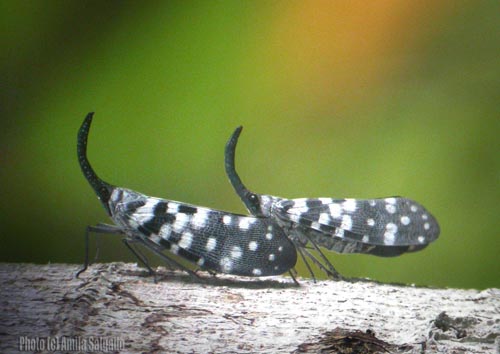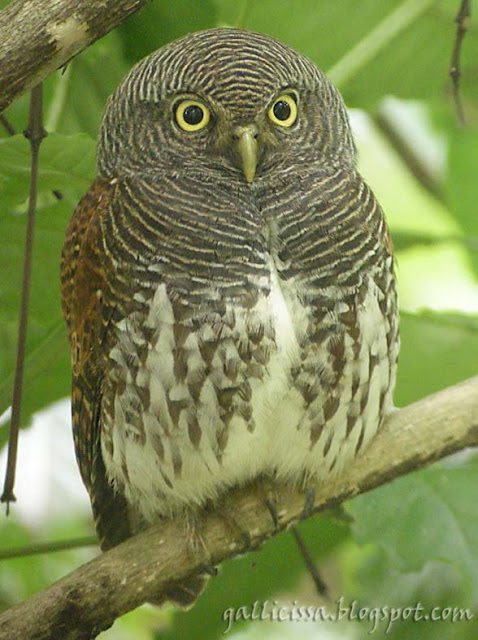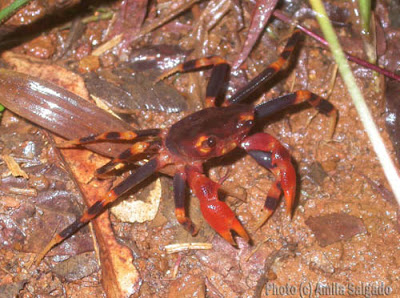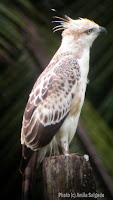I visited Sinharaja rain forest with a British expat family over 21-23 Dec. They were referred by Graham Crick who has been on two 15 day birding trips to Sri Lanka in 2004 and 2006, lead by me.

Just before we were ready to set off on our first walk to the forest, we discovered the lucky person to have got the first bleeding leech bite—one of the kids—who was rather excited about it. It probably would have got on when he went out to photograph some flowers before wearing the leech socks provided. The reward for this was a booklet titled “Mixed species bird flocks in Sinharaja” authored by Prof. Sarath Kotagama and Dr. Eben Goodale.
Early in our foray into the forest after lunch a male Malabar Trogon offered heart-melting scope views before disappearing into the woods.
It was overcast not at all helping the player comfort. Our only other birds seen in this session were White-bellied Drongo, Sri Lanka Junglefowl, Pale-billed Flowerpecker and Green Imperial Pigeon.
The second challenge was spotting the first lizard inside the forest. It didn’t take too long—this time, the mother of the kids—spotted a gravid female Kangaroo Lizard. A book titled 'Birds of Sinharaja' authored by Prof. Kotagama, was the prize for spotting the lizard, which ended up with one of the kids who diligently took notes and marked the checklist.
Our final noteworthy critter for the day pair of False Lantern-flies Pyrops maculata.
And we retreated to Martin’s for dinner and overnight stay.
Early next day, we had tea with five Sri Lanka Blue Magpies, which arrived soon after 6.00 a.m. to feed on the insects fallen under lamps at Martin’s. These were followed by a confiding Spot-winged Thrush. After this, an Orange Minivet that visited the tree crowns in front. Soon we went to the forest on a pre-breakfast walk, which gave us fine views of Sri Lanka Crested Drongo, Sri Lanka Junglefowl, Black-capped Bulbul, Yellow-fronted Barbet, to name a few. After meeting our compulsory local guide, Ranjith Premasiri, we went on a longer walk.
Three challenges were today by me: spotting a snake, a monkey and a butterfly named Tree Nymph.
We had no luck with monkeys; we had to contend with only the booming calls of two dominant male Purple-faced Leaf Monkey engaged in vocal distancing. The snake spotting-challenge didn’t go to anybody, as I was the first to spot one—my fine was a Sri Lanka Keelback Water Snake—a regular at Sinharaja.
Ranjith soon followed finding a beautiful Green Whip Snake Ahaetulla nasuta, merged perfectly into the lush undergrowth. Its generic name is same as its local name: Ahaetulla, which means the "eye plucker"
This explains a myth that surrounds to the effect that they attack the eyes of humans—not true.
A book titled "Pictorial Pocket Guide to Mammals in Sri Lanka" by Prof. Kotagama went for one of them for spotting the first Tree Nymph butterfly of the trip. Moving on, Brown-capped Babbler waited just long enough to offer scope views. We had a decent mixed species bird flock with the usual complement of species.
Top highlight in the post-lunch session was a Red-faced Malkoha, which gave multiple scope views for all of us. We were lucky that the weather remained good for most parts. (We had to put up our umbrellas for a couple of short drizzles.) It rained from mid night until 8.30 a.m. in the morning of day 03. We enjoyed a late birding breakfast. An obliging Asian Brown Flycatcher and more Orange Minivets gave good long views from the balcony. On the way back to Colombo, we had a Crested Hawk Eagle, sitting handsomely, on a roadside post and several Chestnut-headed Bee-eaters. Soon, we paused in the Blue Water in the west coast for an artery-clogging buffet lunch and a dip in the pool. Very good.
We played an absorbing game of Scrabble; the final score 294-248 in favour of me doesn’t really reflect how closely the game flowed. Soon after the tour, I got an e-mail from them with a link and seeking my views. It took me to an optics site and to a certain spotting scope special offer.
The gentleman wrote, "we have turned twicthers!"


























 We also had several Tree Climbing Crab Ceylonthelphusa scansor, which was discovered in 1995 from Sinharaja. Our only mammalian highlight during the night walk was Sambar Deer Cervus unicolor. I heard the call of Serendib Scops Owl below Martin’s (near the steam that flows down towards the village) at midnight. We didn’t try to find it.
We also had several Tree Climbing Crab Ceylonthelphusa scansor, which was discovered in 1995 from Sinharaja. Our only mammalian highlight during the night walk was Sambar Deer Cervus unicolor. I heard the call of Serendib Scops Owl below Martin’s (near the steam that flows down towards the village) at midnight. We didn’t try to find it. We also encountered several snakes during the daytime: Millard’s Hump-nosed Pit Viper Hypnale nepa, Common Bronzeback Dendrelaphis tristis, a possible Stripe-tailed Bronzeback Dendrelaphis caudolineolatus (featured below), and Sri Lanka Keelback Water Snake Xenochrophis asperrimus. Amazing what a few focused eyes could find!
We also encountered several snakes during the daytime: Millard’s Hump-nosed Pit Viper Hypnale nepa, Common Bronzeback Dendrelaphis tristis, a possible Stripe-tailed Bronzeback Dendrelaphis caudolineolatus (featured below), and Sri Lanka Keelback Water Snake Xenochrophis asperrimus. Amazing what a few focused eyes could find!







































